
Table of Contents
In the dynamic landscape of modern business, one question echoes through the hallowed halls of boardrooms and the bustling corridors of startups alike: ‘How can we maximize our ROI while minimizing our time and resources?’ The answer, as it turns out, is not a mystical elixir or a secret handshake, but a tangible, technological solution that’s been quietly revolutionizing industries worldwide
- automation. But how do we quantify the true value of this time-saving tech? How do we translate the intangible benefits of automation into concrete, business efficiency metrics? And most importantly, how can we ensure that our technology investment analysis is not just a numbers game, but a strategic roadmap to sustainable growth? Today, we’re diving headfirst into the fascinating world of automation ROI, armed with nothing but curiosity and a calculator. So, grab your thinking caps, and let’s embark on this journey together. By the end of this article, you’ll not only understand how to calculate the ROI of automation but also gain insights into how to optimize your business processes, boost productivity, and make data-driven decisions that will propel your business into the future. But first, let’s address the elephant in the room
- the time crunch. According to a study by Atlassian, employees spend an average of 28 hours a month on avoidable tasks, time that could be better spent on strategic planning, innovation, or simply enjoying a well-deserved coffee break. So, the question is, are you ready to reclaim that time and watch your business grow? Let’s find out.
Unlocking the Hidden Potential of Automation: A Comprehensive Guide to Measuring and Maximizing Your Business’s Efficiency
In the dynamic landscape of modern business, automation has emerged as a transformative force, promising to unlock hidden potential and drive efficiency to unprecedented levels. However, harnessing this power effectively requires a strategic approach that goes beyond merely implementing automated systems. This comprehensive guide is designed to empower you, the business leader, to measure and maximize your organization’s efficiency through automation. We will delve into the intricacies of identifying key areas ripe for automation, selecting the right tools for the job, and implementing strategies that ensure a smooth transition. But our journey doesn’t end there. We will also explore the often-overlooked aspects of continuous improvement, monitoring, and optimization. After all, automation is not a set-it-and-forget-it endeavor; it’s a living, breathing part of your business that requires nurturing to reach its full potential. So, buckle up as we embark on this exciting adventure, where every click, every algorithm, and every data point brings you one step closer to unlocking the hidden potential of automation and propelling your business into a new era of efficiency.
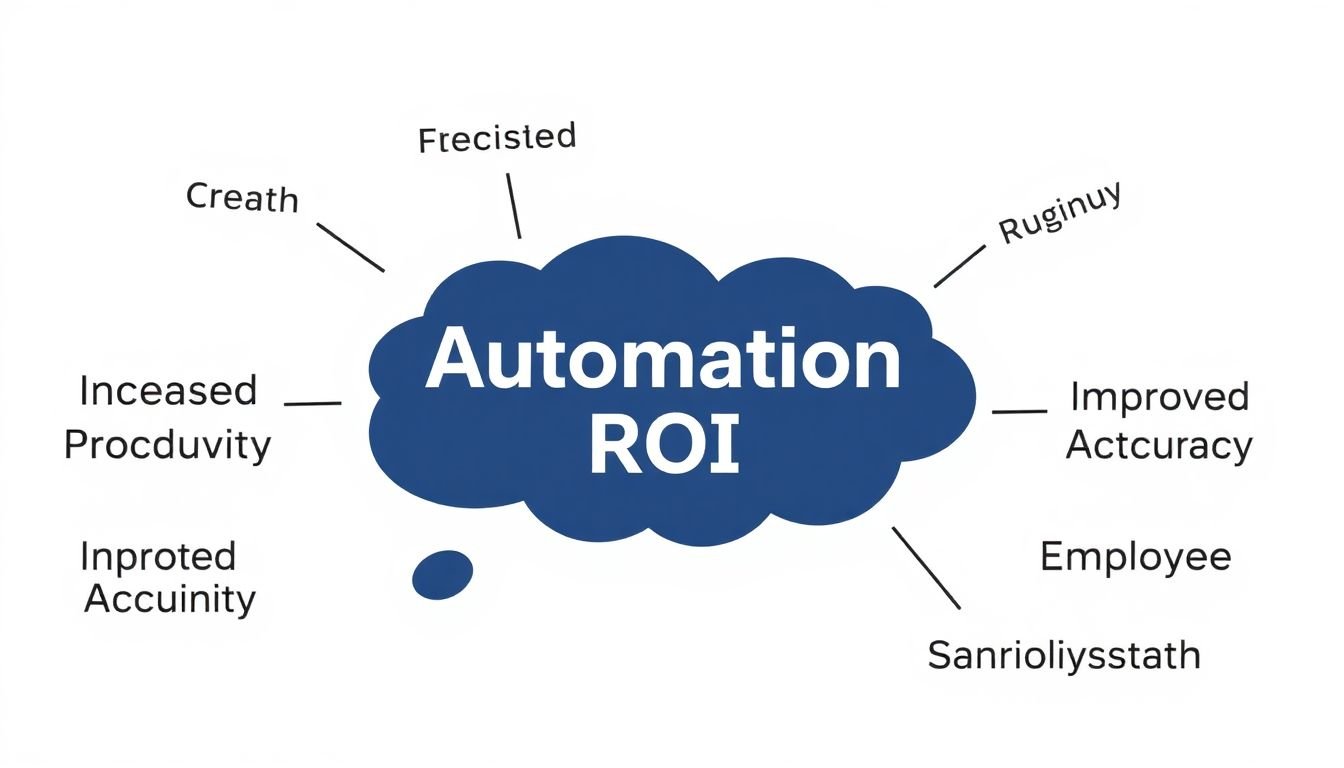
Understanding Automation ROI: A Fresh Perspective
Automation, a buzzword in today’s tech-driven world, is often evaluated by its Return on Investment (ROI), a metric that quantifies the benefit of an investment relative to its cost. In the context of automation, ROI is not merely a financial metric, but a comprehensive measure that encompasses tangible and intangible benefits, providing a holistic view of the value automation brings to an organization.
The tangible benefits of automation are often the first to come to mind. These include increased productivity, reduced operational costs, and improved efficiency. For instance, automated processes can handle large volumes of work quickly and accurately, freeing up human resources to focus on more complex tasks. This results in a direct financial ROI, as the cost savings can be quantified and compared to the initial investment.
However, the intangible benefits of automation are equally, if not more, significant. These benefits, though harder to quantify, contribute greatly to the overall ROI. One such benefit is improved customer satisfaction. Automation can provide 24/7 customer service, reducing wait times and ensuring consistency in responses. This can lead to increased customer loyalty and positive word-of-mouth, ultimately driving business growth.
Another intangible benefit is enhanced employee satisfaction and engagement. Automation can take over repetitive, mundane tasks, allowing employees to focus on creative, strategic, and problem-solving work. This can lead to a more motivated and productive workforce, further contributing to the overall ROI.
Moreover, automation can provide real-time data and analytics, enabling informed decision-making. This can lead to improved business strategies, risk mitigation, and innovation, all of which contribute to the overall ROI in indirect but powerful ways.
In conclusion, understanding automation ROI requires a fresh perspective that goes beyond just financial metrics. It’s about recognizing the intangible benefits
- improved customer satisfaction, enhanced employee engagement, and data-driven decision-making
- that contribute to the overall value automation brings to an organization. It’s about seeing ROI not just as a financial return, but as a comprehensive measure of the value automation brings to an organization’s growth, competitiveness, and sustainability.
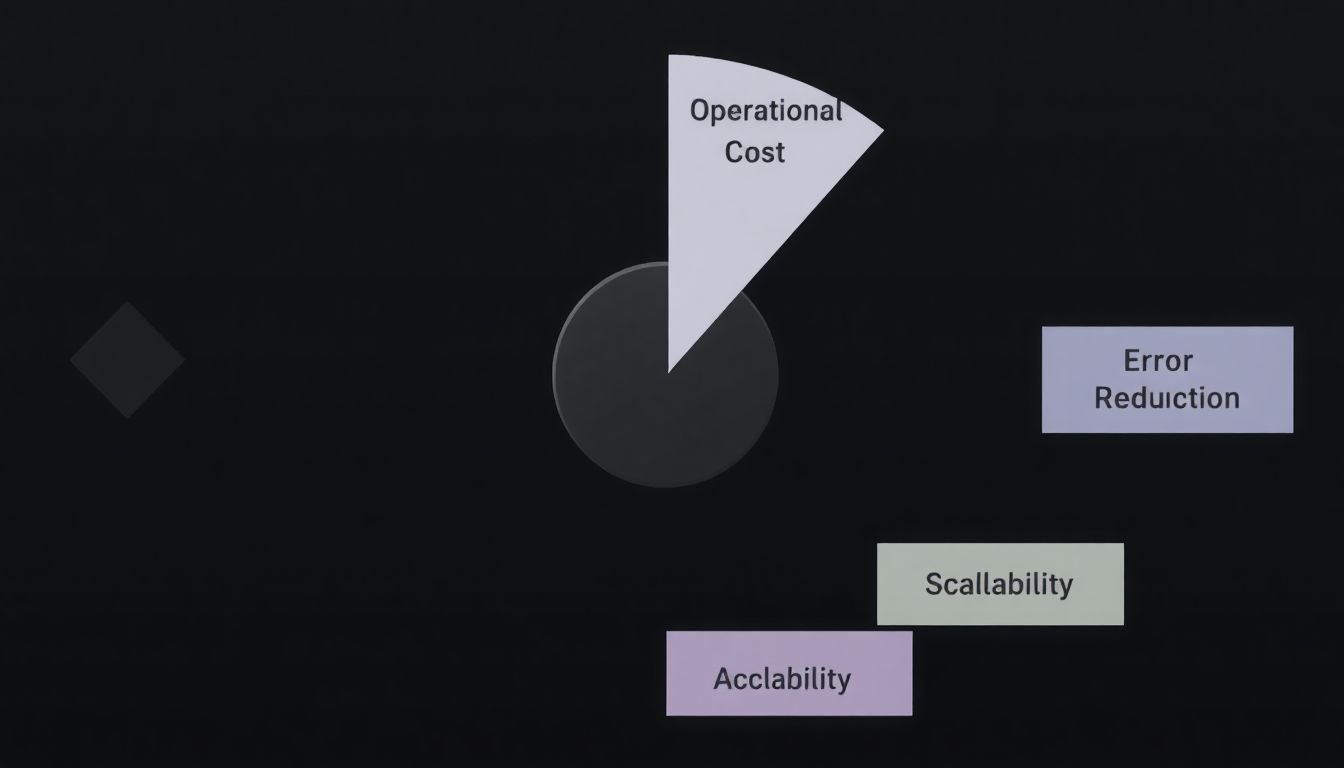
The Anatomy of Automation ROI: Key Components
Automation ROI, or Return on Investment, is a multifaceted concept that can be dissected into several key components. Let’s delve into each of these, using real-world examples to illustrate their significance.
Initial Investment: This is the first and often the most substantial component of automation ROI. It includes the cost of automation software, hardware, implementation, and training. For instance, a manufacturing company might invest in robotic arms and the necessary software, along with training for their staff to operate and maintain these systems. The initial investment for such a project could range from tens to hundreds of thousands of dollars.
Operational Costs: These are the ongoing expenses associated with keeping the automation system running. They include maintenance, updates, and any additional staff required to manage the system. For example, a company using automated customer service bots might need to hire a dedicated team to monitor and update the bot’s responses. These operational costs can vary greatly depending on the scale and complexity of the automation.
Time Savings: Automation can significantly reduce the time required to complete tasks, freeing up human resources for more complex or creative work. Consider a marketing agency that automates its social media posting. Instead of spending hours each day manually scheduling posts, the team can now focus on strategy, content creation, and engagement. This time savings can be quantified in terms of hours or even full-time equivalents (FTEs).
Error Reduction: Automation can minimize human error, leading to improved product quality, reduced waste, and increased customer satisfaction. A pharmaceutical company that automates its packaging process can reduce the risk of incorrect dosages or mix-ups, potentially saving millions in recalls and reputational damage.
Scalability: Automation allows businesses to handle increased workloads without proportionally increasing their staff. This is particularly beneficial for businesses experiencing rapid growth. A small e-commerce startup that automates its order fulfillment process can easily scale up to handle a sudden influx of orders during a promotional event.
Each of these components contributes to the overall ROI of automation. By understanding and quantifying these aspects, businesses can make informed decisions about when and where to automate, maximizing their return on investment.
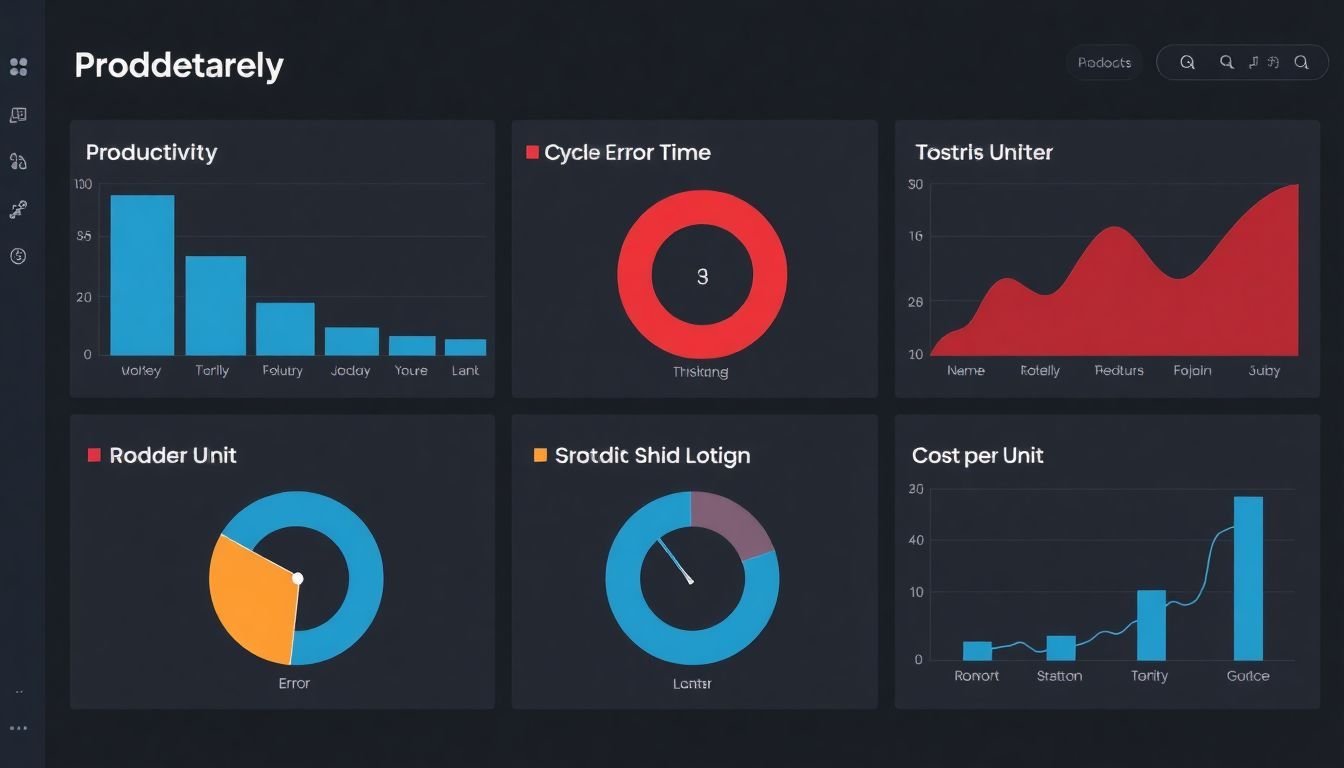
Measuring Business Efficiency Metrics: The Building Blocks of Automation ROI
Measuring business efficiency metrics is the cornerstone of calculating the return on investment (ROI) for automation initiatives. By tracking these key metrics, businesses can quantify the benefits of automation, identify areas for improvement, and make data-driven decisions. Let’s delve into the essential business efficiency metrics and explore how to measure and relate them.
The first building block in measuring business efficiency is Process Cycle Efficiency (PCE). PCE quantifies the time taken to complete a process compared to the ideal time. It’s calculated as: PCE = (Ideal Time / Actual Time) * 100. For instance, if a task takes 10 minutes to complete manually but could be done in 5 minutes ideally, the PCE would be 50%.
Next, consider Error Rate, which measures the frequency of mistakes in a process. It’s calculated as: Error Rate = (Number of Errors / Total Operations) * 100. Lower error rates indicate higher process efficiency.
Throughput is another critical metric, measuring the number of units processed in a given time. It’s calculated as: Throughput = Units Produced / Time. Automation often increases throughput, enabling more work to be done in less time.
Cost per Unit is a financial metric that measures the total cost of producing a single unit. It’s calculated as: Cost per Unit = Total Cost / Units Produced. Automation can reduce this by streamlining processes and reducing waste.
These metrics are interconnected. For example, reducing the error rate can increase throughput and decrease cost per unit. Improving PCE can also increase throughput and reduce cost per unit. By tracking and analyzing these metrics, businesses can continuously improve their automation ROI.
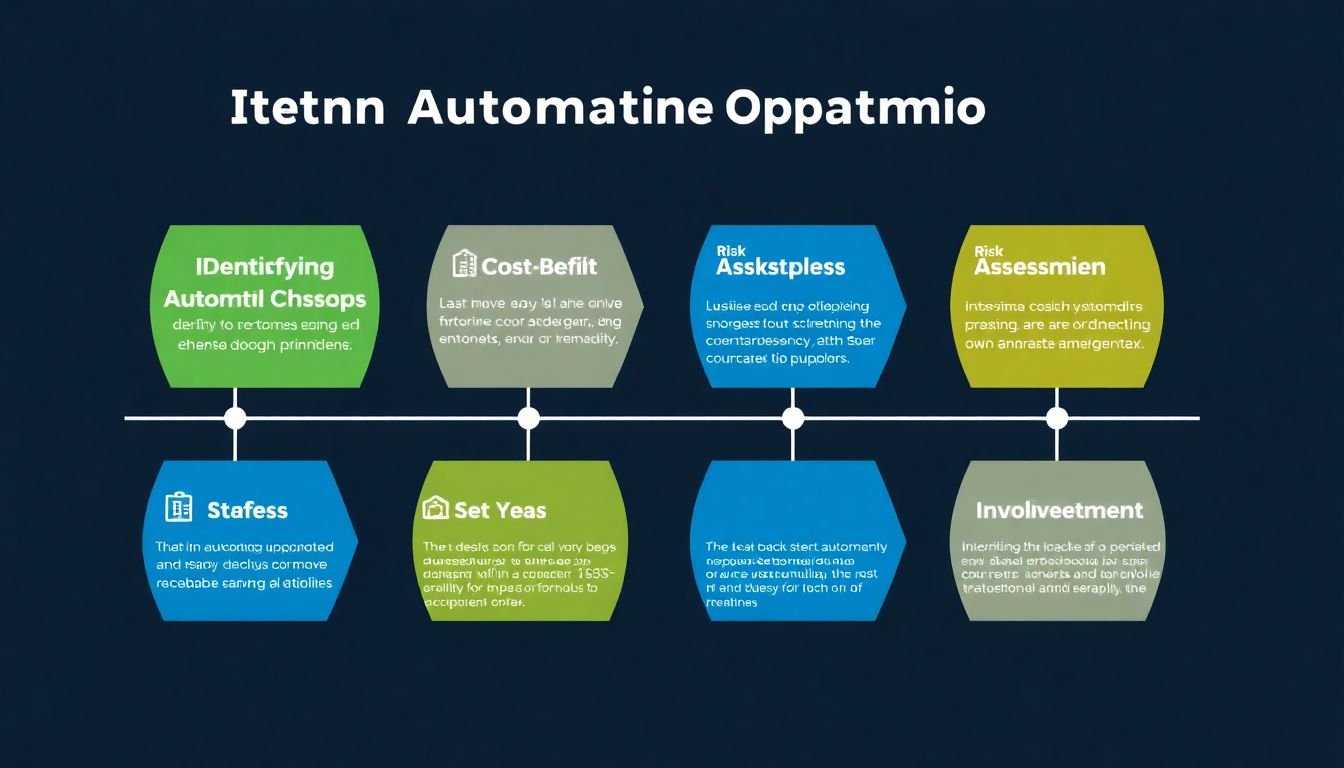
The Art of Technology Investment Analysis: A Deep Dive
Embarking on a journey into the art of technology investment analysis is akin to navigating a labyrinth of numbers, trends, and strategic foresight. At the heart of this process lies a meticulous examination of automation opportunities, a rigorous cost-benefit analysis, and a comprehensive risk assessment. Let’s delve into these components, one by one.
Identifying Automation Opportunities:
- The first step in our analysis is to identify processes ripe for automation. This involves a keen eye for inefficiencies and a deep understanding of the business operations. By automating repetitive tasks, we can free up human capital to focus on creative and strategic endeavors. Consider the following steps in this process:
- Map out current processes to identify repetitive tasks.
- Evaluate the feasibility of automation for each task.
- Prioritize automation candidates based on potential impact and ease of implementation.
Cost-Benefit Analysis:
- Once we’ve identified automation opportunities, we must subject them to a rigorous cost-benefit analysis. This involves quantifying both the costs associated with implementing the automation and the benefits it will bring to the organization. Here’s a simplified breakdown of this process:
- Calculate the initial investment required for automation, including software, hardware, and implementation costs.
- Estimate the ongoing costs, such as maintenance and updates.
- Quantify the benefits, which may include increased productivity, reduced error rates, or cost savings from reduced labor.
- Compare the costs and benefits to determine the potential return on investment (ROI).
Risk Assessment:
- No investment is without its risks, and technology investments are no exception. A thorough risk assessment helps us anticipate and mitigate potential challenges. This process might involve:
- Identifying potential technical risks, such as compatibility issues or system failures.
- Evaluating organizational risks, such as resistance to change or a lack of necessary skills.
- Assessing external risks, like changes in regulations or market conditions.
- Developing contingency plans to mitigate these risks.
Involving Stakeholders:
Throughout this process, it’s crucial to involve stakeholders from various departments. This ensures that the analysis is comprehensive and that the resulting investments align with the organization’s goals. Stakeholders can provide valuable insights into the feasibility and potential impact of automation opportunities. They can also help identify risks and suggest mitigation strategies. By involving stakeholders, we foster a sense of ownership and commitment to the technology investment process.
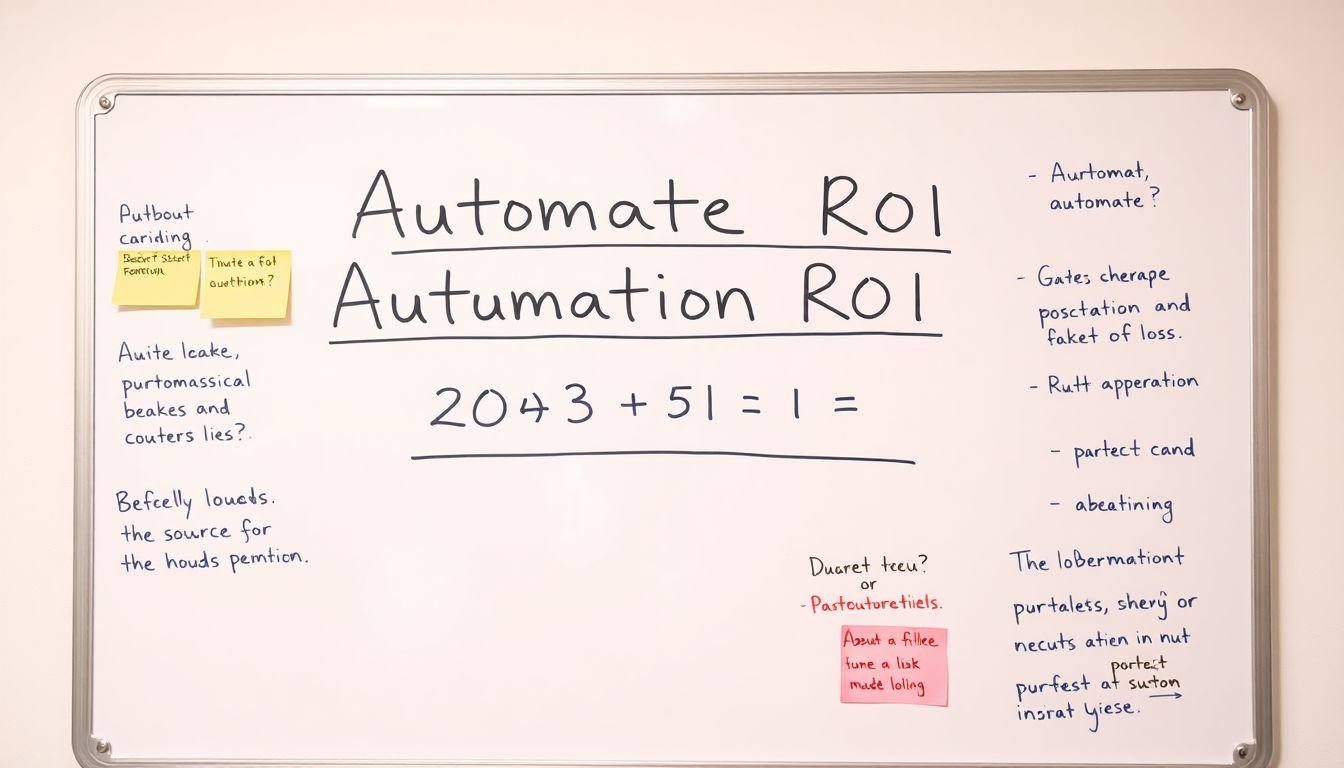
Calculating Automation ROI: The Formula and Its Assumptions
Calculating the Return on Investment (ROI) for automation projects is a critical step in determining their viability and potential benefits. The formula used to calculate automation ROI is relatively straightforward, but it’s essential to understand the assumptions behind it to ensure accurate and meaningful results. The formula is as follows:
**Automation ROI = [(Savings
- Cost) / Cost] x 100%**
Let’s break down this formula and discuss its assumptions:
- Savings: This is the primary benefit of automation, representing the cost savings achieved by automating a particular process. It’s typically calculated as the difference between the manual process cost and the automated process cost. The assumption here is that the cost savings are directly attributable to automation and that other factors remain constant. However, this assumption may not hold true in all cases. For instance, if the automated process requires additional training or maintenance, these costs should also be factored into the savings calculation.
- Cost: This refers to the total cost of implementing the automation, including hardware, software, implementation, and training costs. The assumption here is that these costs are one-time expenses. However, if there are ongoing costs associated with maintaining or updating the automation, these should also be considered in the cost calculation.
- **[(Savings
- Cost) / Cost] x 100%**: This part of the formula calculates the ROI as a percentage. The assumption here is that the ROI is a linear function of the savings and costs. However, in reality, the ROI may not be linear, especially if there are significant economies of scale or if the automation has a substantial impact on other parts of the business.
Understanding these assumptions is crucial because they can significantly impact the ROI calculation. For example, if the savings are overestimated or the costs are underestimated, the ROI will be overstated, potentially leading to poor decision-making. Similarly, if the assumptions are too conservative, the ROI may be underestimated, causing valuable automation opportunities to be overlooked. Therefore, it’s essential to carefully consider and validate these assumptions to ensure that the automation ROI calculation is accurate and reliable.

Case Studies: Automation ROI in Action
Automation, a buzzword that has transcended the realm of science fiction, has become a tangible reality for businesses worldwide. Let’s delve into two compelling case studies that illustrate the transformative power of automation and its tangible Return on Investment (ROI).
**Case Study 1: Manufacturing Marvels
- AutoParts Inc.
AutoParts Inc., a leading manufacturer of automotive components, faced a daunting challenge: a production line that was labor-intensive, error-prone, and struggling to keep up with demand. They decided to automate their assembly line using collaborative robots (cobots) and automated guided vehicles (AGVs).
The ROI calculation was straightforward yet astounding. The initial investment of $500,000 included the cost of cobots, AGVs, and integration. However, the benefits were swift and substantial. The automation reduced production time by 40%, cut defects by 35%, and increased throughput by 25%. With an annual revenue of $10 million, these improvements translated into an additional $2.5 million in sales. The payback period was a mere 12 months, with an ROI of 150% over three years.
However, the journey wasn’t without challenges. The initial integration required careful planning and training of staff. AutoParts Inc. also had to navigate the fear of job loss among employees. But with a focus on reskilling and upskilling, they turned potential threats into opportunities, creating new roles in maintenance and programming.
**Case Study 2: Retail Revolution
- Fashionista Inc.
Fashionista Inc., an e-commerce retailer, was drowning in a sea of manual order processing and shipping. They implemented an automated order fulfillment system, complete with robotic picking and packing, and automated shipping label generation.
The ROI was calculated based on the reduction in operational costs and increased order accuracy. The automation system cost $300,000, but it led to a 60% reduction in order processing time, a 40% decrease in shipping errors, and a 20% increase in order volume. With an annual revenue of $8 million, these improvements resulted in an additional $1.6 million in sales. The payback period was a swift 8 months, with an estimated ROI of 180% over two years.
Fashionista Inc. faced challenges in system integration and ensuring the robots could handle the variety of products in their inventory. But with meticulous planning and continuous improvement, they overcame these hurdles and are now reaping the benefits of their automated system.
These case studies illustrate that automation isn’t just about cost-cutting; it’s about driving growth and creating new opportunities. By embracing automation, businesses can streamline operations, improve accuracy, and boost productivity. The challenges faced and lessons learned serve as valuable insights for any business considering automation.
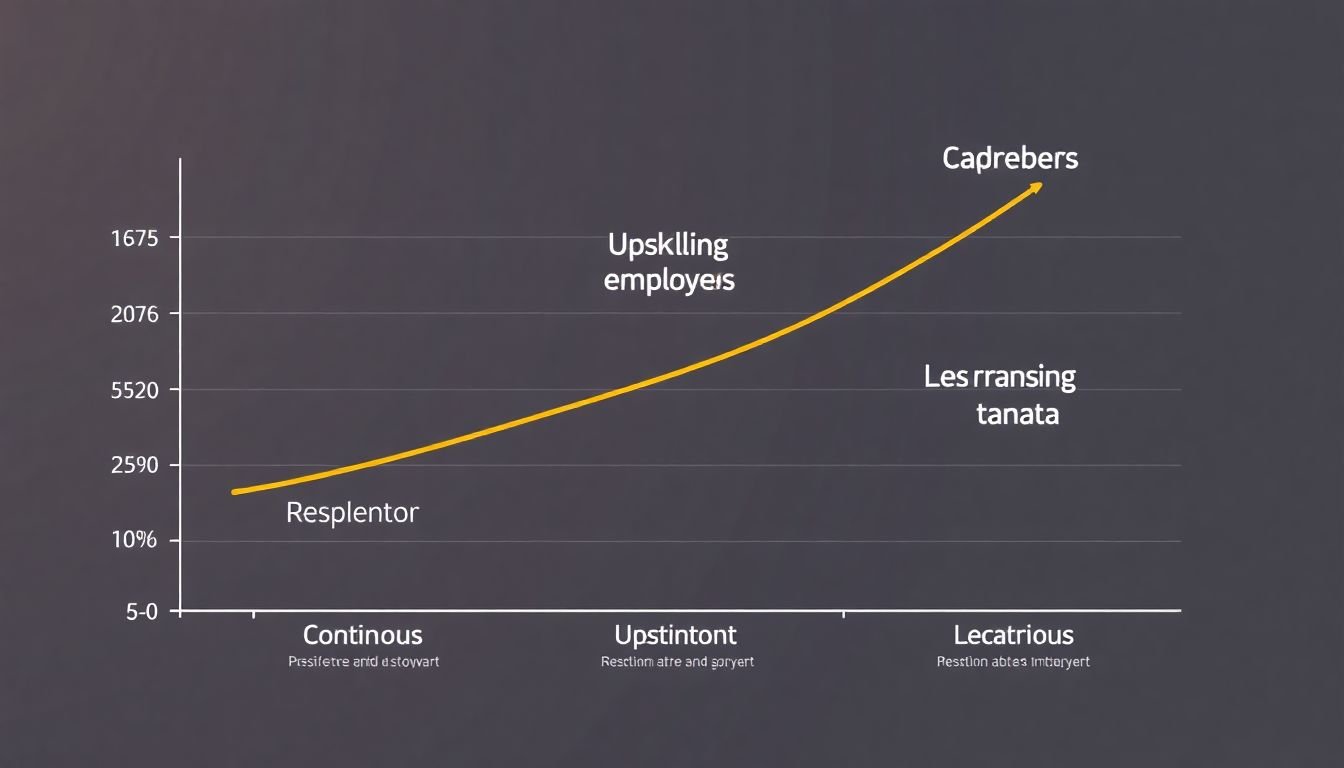
Maximizing Automation ROI: Strategies for Long-Term Success
Maximizing Automation ROI (Return on Investment) over the long term is a strategic journey that goes beyond initial implementation. It’s about continuous evolution, employee empowerment, and data-driven decision making. Let’s delve into three key strategies to ensure your automation efforts yield sustained benefits.
Continuous Improvement: Never Stand Still
Automation is not a set-it-and-forget-it endeavor. To maximize ROI, you must continually refine and optimize your automated processes. This involves regular process reviews, identifying bottlenecks, and implementing improvements. It’s a cycle of assess, improve, reassess. Remember, even the most efficient automation can become a bottleneck if it’s not regularly reviewed and updated.
Upskilling Employees: Empowering the Workforce
Automation doesn’t replace jobs; it transforms them. To maximize ROI, invest in upskilling your employees to work effectively with automated systems. This could involve training on new tools, data analysis, or even process improvement methodologies. An upskilled workforce can not only operate automated systems but also drive continuous improvement by identifying areas for further automation or enhancement.
Leveraging Data and Analytics: The Eyes into Your ROI
Automation generates a wealth of data. To maximize ROI, you must leverage this data to gain insights and make informed decisions. Here’s a simple way to approach this:
- Measure: Track key performance indicators (KPIs) related to your automation, such as process speed, error rates, and cost savings.
- Analyze: Use data analytics tools to identify trends, patterns, and outliers in your automation performance.
- Act: Based on your analysis, make data-driven decisions to optimize your automation and maximize your ROI.
Remember, data is only valuable if you use it to drive action.
In conclusion, maximizing automation ROI over the long term is not about the initial investment, but about the continuous journey of improvement, empowerment, and insight. It’s about turning your automation into a strategic advantage that keeps evolving and delivering value.

The Future of Automation ROI: Trends and Predictions
The future of automation ROI is a landscape of immense potential and transformation. As we delve into the emerging trends, it’s clear that businesses that prepare and adapt will reap significant rewards. Let’s explore some of these trends and discuss how businesses can capitalize on them.
The first trend is the increasing adoption of AI and machine learning. These technologies are no longer the realm of tech giants; they’re becoming accessible and affordable for businesses of all sizes. AI can automate complex tasks, improve decision-making, and enhance customer experiences. To prepare, businesses should invest in upskilling their workforce to understand and implement these technologies.
Another trend is the rise of Robotic Process Automation (RPA). RPA can automate repetitive, rule-based tasks, freeing up human time for more creative and strategic work. To capitalize on this, businesses should identify which tasks can be automated and develop a roadmap for implementation.
Furthermore, the Internet of Things (IoT) is set to explode, with predictions of over 29 billion connected devices by 2030. This means a wealth of data that can be used to improve operations and customer experiences. Businesses should start thinking about how they can collect, analyze, and act on this data.
Lastly, there’s the trend towards hyperautomation, where technologies work together to automate entire processes. To prepare, businesses should start by automating individual tasks, then look for opportunities to connect these tasks into end-to-end processes.
In conclusion, the future of automation ROI is bright, but it requires businesses to be proactive. It’s not just about implementing new technologies; it’s about understanding how these technologies can transform your business model and customer experiences. So, start exploring, start planning, and start preparing for the future of automation.
FAQ
What is the ROI of Automation and why is it important for businesses?
How do I calculate the ROI of automation in my business?
What are some key business efficiency metrics to consider when calculating automation ROI?
- Time saved per task or process
- Reduction in human error
- Increased productivity and output
- Cost savings from reduced labor and resources
- Improved customer satisfaction due to faster service
- Increased data accuracy and accessibility
These metrics help quantify the gains from automation and provide a holistic view of its impact on your business.
How can I identify which processes in my business are best suited for automation?
- Frequency of the task
- Time required to complete manually
- Consistency of the process
- Availability of automation tools
- Potential impact on business efficiency and ROI
Prioritize processes with the highest potential impact and easiest implementation.
What are some common pitfalls to avoid when calculating automation ROI?
- Overestimating time savings
- Underestimating implementation costs
- Ignoring soft benefits like improved customer satisfaction or employee morale
- Not accounting for ongoing maintenance and updates
- Failing to consider the learning curve for new tools
- Not factoring in potential process improvements beyond automation
Carefully consider these factors to ensure a realistic and accurate ROI calculation.
How can I ensure a positive ROI from my automation investment?
- Conduct thorough research and analysis before investing in automation tools
- Clearly define objectives and expected outcomes
- Implement a phased approach, starting with low-hanging fruit and scaling up
- Monitor and measure performance using relevant metrics
- Regularly review and optimize automated processes
- Provide adequate training and support for employees
- Consider the long-term potential of automation, not just short-term gains
By following these steps, you’ll increase the likelihood of achieving a positive ROI from your automation investment.
How does technology investment analysis fit into calculating automation ROI?
- Identifying available automation tools and solutions
- Assessing their functionality, compatibility, and scalability
- Evaluating implementation costs, including software, hardware, and integration expenses
- Estimating ongoing maintenance and update costs
- Assessing potential risks and challenges
- Projecting expected ROI and payback period
By conducting thorough technology investment analysis, businesses can make confident decisions about automation investments.
How can I communicate the value of automation to stakeholders?
- Quantifiable metrics and ROI calculations
- Real-world examples and success stories
- Alignment with business objectives and strategic goals
- The potential for process improvement and innovation
- The positive impact on employees, customers, and the bottom line
- The long-term benefits and competitive advantages of automation
Use clear, concise language and visual aids to illustrate your points, and tailor your message to each stakeholder group’s priorities and concerns.